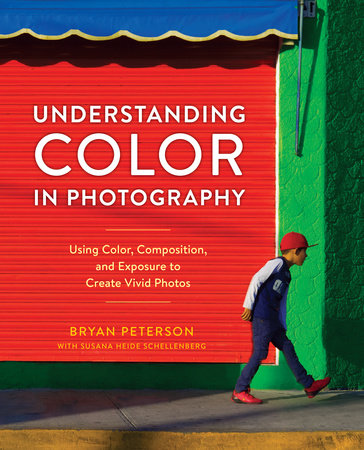Excerpt
Understanding Color in Photography
INTRODUCTION
When I first launched my dream to be a professional photographer back in the early 1970s, I began as most did at that time: by shooting with the less expensive black-and-white films. I had my own darkroom, which meant that I was also processing all of my own black-and-white film and making prints of the best shots.
Six months after I exposed my first black-and-white photograph, I walked into the local camera store in Salem, Oregon, and was delighted to find seven rolls of outdated film sitting in a half-price basket on the countertop. I quickly grabbed all seven rolls, paid the salesperson around fourteen dollars, and headed out the door, gleeful at the money I had saved and in anticipation of a camping trip that weekend, when I would surely shoot all seven rolls.
After my return on Monday, I was visiting my brother—the one who inspired me to get into photography in the first place—and shared the fun I'd had shooting all seven rolls. I laid them out on his kitchen counter, asking whether I needed to take any extra steps to process the outdated film. He looked at them and quickly said, “You can’t process any of these rolls because they’re not black and white. This is color slide film!” I was stunned. As far as I was concerned, a slideshow was the last thing I wanted to make. I was sure the compositions from the camping trip had been my best work yet, but now they would never be the amazing black-and-white images I had hoped to print. Seeing my crestfallen face, my brother pointed out that it
was possible to have prints made from color slides—it was just expensive and time-consuming. The wait could be up to one week and I, at the young age of eighteen, had yet to master the art of patience.
Days passed before my frustration subsided enough to return to the camera store with the seven rolls of Agfachrome 50 film. And several days later, I returned to pick up my slides after a long day’s work as a maintenance man for the City of Salem. What happened next was truly a defining moment in my then-young photographic career. As I placed each slide across the camera store’s light table, I was confronted with some truly remarkable color-filled compositions. The fields of wildflowers and the blue sky with white puffy clouds seemed to leap off the light table. A plate of sliced cucumbers and tomatoes (one of my meals on the camping trip) screamed with the vividness of complementary colors. It was transformative; I was awash in the tremendous power of color. Within minutes, I asked the camera-store owner if he had any more outdated film—if he did, I would take every last roll.
Unfortunately, he had no more, but he did offer an attractive discount if I would buy ten rolls at once, and an even better one if I would buy twenty (called a “brick” of film). Little did I know just how many bricks I would buy over the next thirty-plus years. My love for color photography had begun.
Soon after, I picked up an orange filter at the camera store and started using it to photograph sunsets and sunrises. And later, while fumbling through a cardboard box on the countertop of that same camera store, I discovered a deeply colored magenta filter and a deep blue filter. Although I never found much use for the blue filter, I had no trouble beginning my love affair with the magenta filter. It was remarkably useful when shooting during the predawn and twilight “blue hour,” when the sun is below the horizon and the sky takes on a predominantly blue hue, as well as for shooting cityscapes and landscapes.




